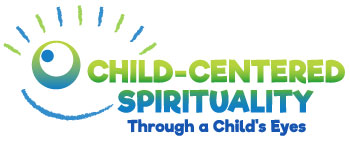 If we are going to help children find the misbeliefs in their self-talk and get rid of them, we should understand how they got there in the first place. They are not arbitrary. They come from somewhere, commonly from….
If we are going to help children find the misbeliefs in their self-talk and get rid of them, we should understand how they got there in the first place. They are not arbitrary. They come from somewhere, commonly from….
- Hearing something repeatedly
- Not being told something they needed to hear
- Being left on their own emotionally when they were very young to handle a traumatic life event
Truth or Myth? How can they tell the difference?
Consider this standard of evaluation and tailor it to fit your values and beliefs.
MYTHS/MISBELIEFS. . . |
TRUTH. . . |
|---|---|
|
|
“The lies we tell other people are nothing compared to the lies we tell ourselves.”
― Derek Landy
Where can children look to find truth about themselves?
 Kids find truth about themselves in the faces and words of loving, caring adults.
Kids find truth about themselves in the faces and words of loving, caring adults.
Be intentional about noticing the child’s most intense feelings: hurt, embarrassed, angry, ashamed or afraid. That’s when they are more likely to tell themselves a lie and believe it. As the adult, speak up with short, truthful statements during these experiences. For example:
- Parents fighting or arguing: “All parents fight sometimes,“ or “Parents can argue and still love each other.”
- Child admits she doesn’t want to like her new stepdad because it’s unfair to her dad and it would hurt his feelings if he knew: “It’s okay to let yourself love your stepdad. You can love your dad and like (or even love) your stepdad at the same time. You can never have too many people to love and who love you in your life!”
 Kids find truth about themselves in sacred writings the family looks to.
Kids find truth about themselves in sacred writings the family looks to.
As an example, for families who name the Bible as a source of truth, they find statements about themselves – I am God’s child; I cannot lose God’s love; I have a purposeful future; God doesn’t always answer my prayers the way I want, but I know God is still watching over me.
“You desire truth in the inner parts; you teach me wisdom in the inmost place.” Psalm 51:6
Conversation starters and games to increase a child’s positive inner speech
Ages 2-5
- Taking the photo: “You can do lots of things well. What are some of them?” Guide the child to think of something he or she does well. Then take their picture– running, jumping, riding a bike; or let them choose an object depicting what they do well, such as a ball, spatula or puzzle. Let the child decide who to send the picture to.
- Talent Show (at a family gathering or with neighbor kids): Each (preschool) child tells one of the things they do well (e.g. twirling, hugging, whistling, somersault). Give them time “on stage” to do it alone. Then ask him/her to lead the others in doing it too.
- Story book: Franklin Rides a Bike
Ages 6-11 – Game: Truth or Lie
(best with extended family or friends) Each person makes a true statement (e.g. favorite color, food, activity; where they go to school). Explain that we will go around again and have them share another statement, only this time they can say something that is true or not true. The others have a chance to guess which it is.
Tweetable: 4 games and activities with kids to strengthen positive self-talk. Go here. Click to Tweet
